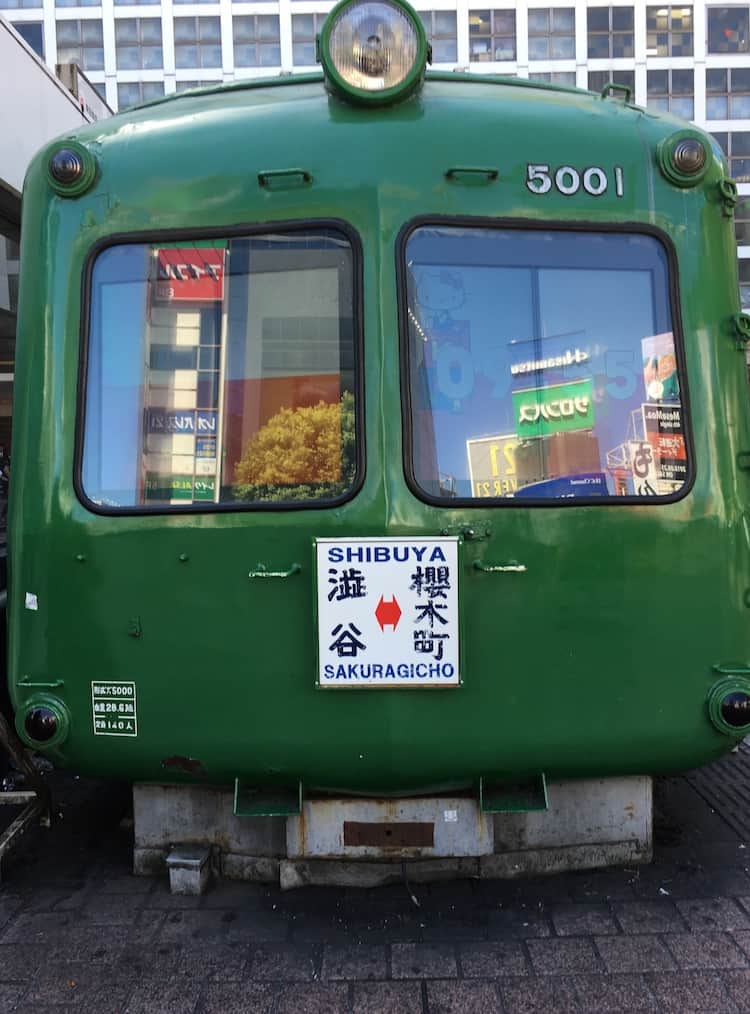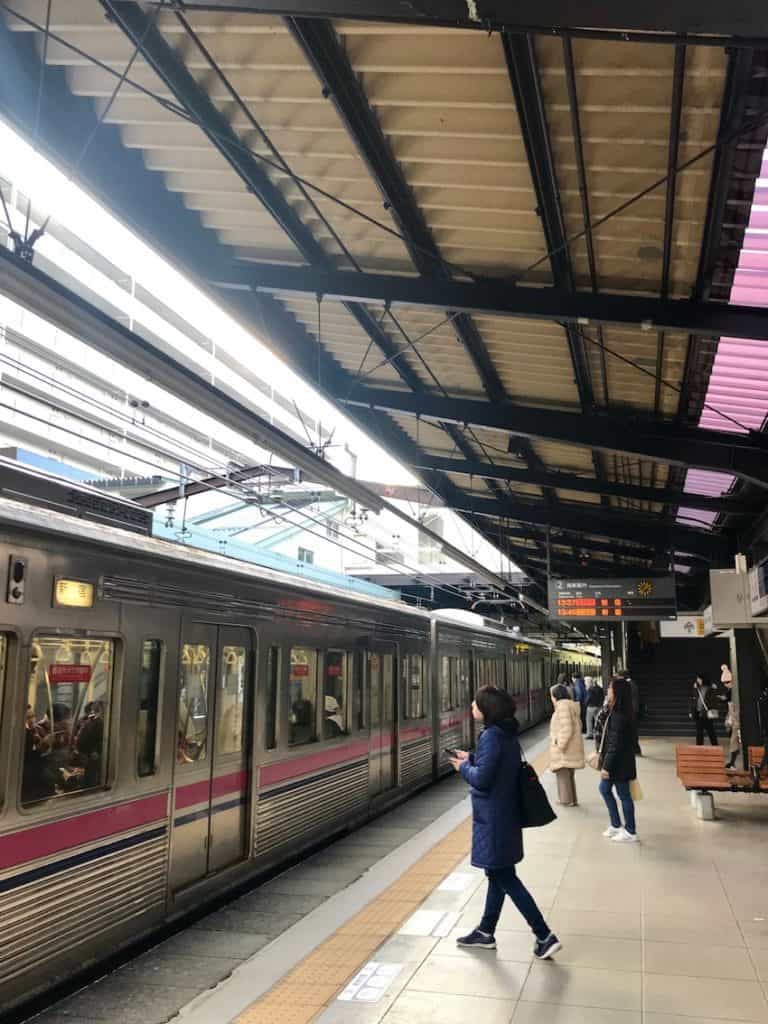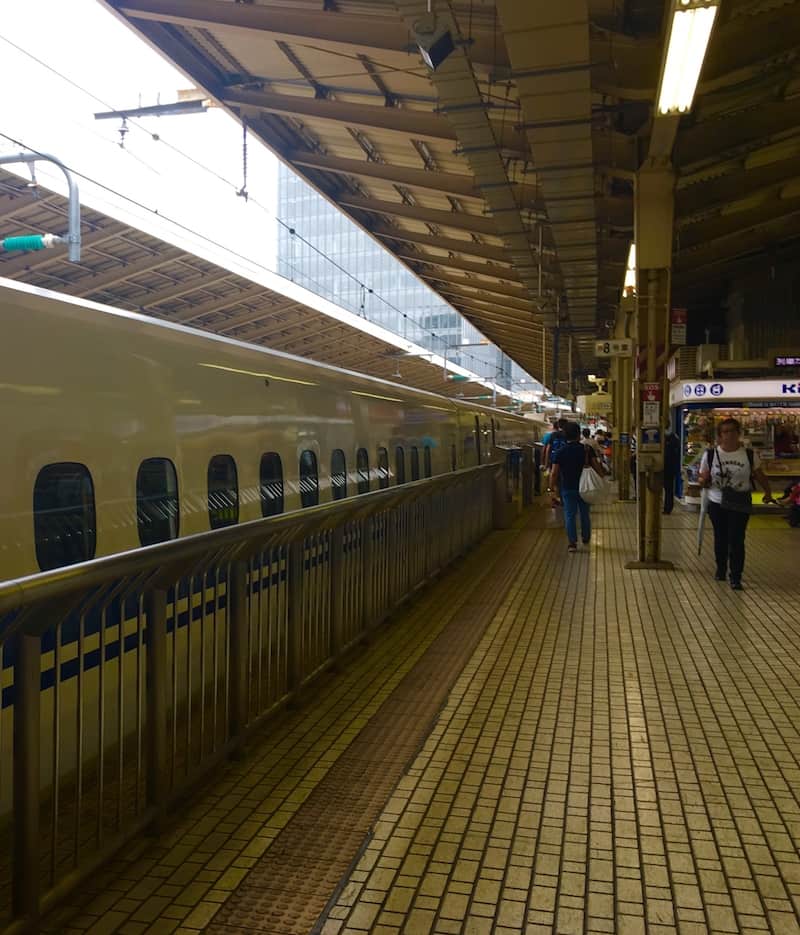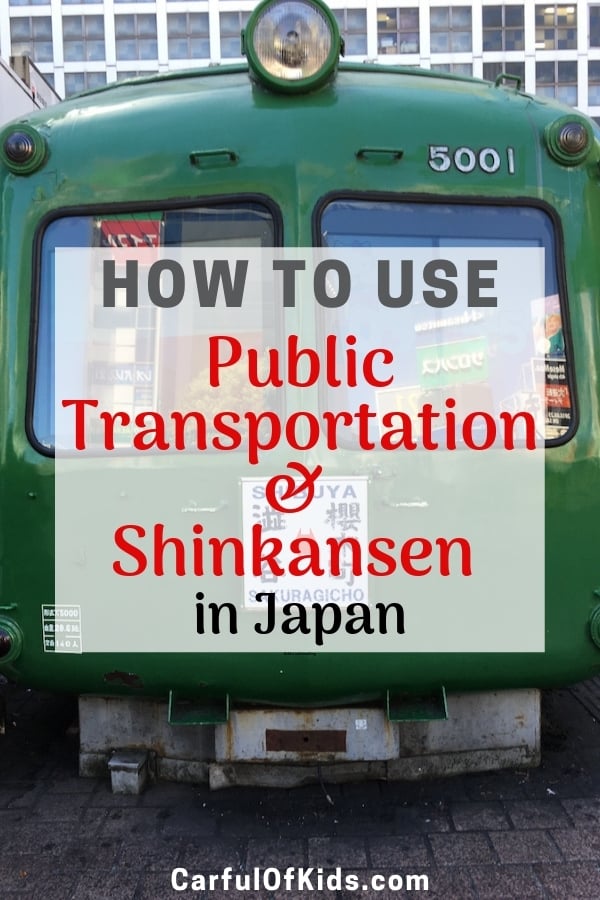
How to Use Japanese Public Transportation
Japan’s transportation system is world famous and for a very good reason. It’s efficient, relatively inexpensive and convenient for residents and travelers, alike. At first glance, Japan’s transportation system looks massive web of different colored lines on a map. And it can be intimidating. Here’s my top hints and a few rules on how to use Japanese public transportation.
Tokyo Subway Operators
Japan’s, including Tokyo, subways are operated by several different companies. The three biggest companies in Tokyo are Japan Rail Company or JR Group, Tokyo Metro, and Toei Subway.
Japan Rail Group
The Japan Rail Group, or JR, operates railways and subways throughout Japan. It also operates the Shinkansen, or bullet trains.
Tokyo features four JR subways. Different subway companies share tracks, though the JR subway occasionally use separate tracks.
Yamanote Line–Runs in a circle around central Tokyo.
Keihin-Tohoku Line–Runs north and south through central Tokyo including stops at Uneo and Tokyo Stations.
Chuo-Sobu Line and Rapid Chuo Line–Runs east and west through Tokyo.
Shonan-Shinjuku Line–Runs north and south through western Tokyo
In addition a JR subway station will use a different name than the local line stations. Though the stations are very close or connected to each other. So remember to pay close attention to the station names. And don’t hesitant to look at a map or ask a station staff member if you’re confused.

Tokyo Metro
The Tokyo Metro operates nine lines and 179 stations throughout the Tokyo metro area.
- Ginza Line
- Marunouchi Line
- Hibiya Line
- Tozai Line
- Chiyoda Line
- Yurakucho Line
- Hanzomon Line
- Namboku Line
- Fukutoshin Line
Toei Subway
The Toei Subway operates four lines and 99 stations throughout the Tokyo metro area.
- Asakusa Line
- Mita Line
- Shinjuku Line
- Oedo Line
How to Pay for a Subway Pass
The ticketing system is the most convenient part of the Japanese subway system. There are several different ways to purchase a ticket. So I’ll highlighted the most common options.
Travelers can purchase a 12, 24 or 48-hour subway pass. Though the passes are usually limited to one company’s subways.
Each pass varies in price, though offer an economical option if you’re using the subway multiple times in a day or two. Purchase the pass at the ticketing office for less than $10US.
Note:The ticketing office is separate from the booth at the ticket gate in most stations. When you purchase these types of tickets, make sure you have your passport with you, as most companies require you to show it when purchasing.

What are IC Cards
If you’re traveling within the same city for several days, I recommend buying an IC card, a integrated card or smart card. IC cards, Pasmo or Suica, cost around $5 and you can buy them at the ticket machines inside the subway stations.
Use your IC cards at all subway gates, regardless of the operator. And your IC card will pay for a taxi or bus ride, snacks at the convenience store, and even a meal at some restaurants.
These cards are great for both travelers and residents because you can add more money to them as needed. To refill a card, go to the charge adjustment booth in a train station or use selected ATMs. At the end of your trip, you can empty the card by asking an employee at the train station for a refund on the card.
Individual Subway Tickets
Individually buying subway tickets is one of the most intimidating parts of navigating the Tokyo subway system. This method of ticketing is optimal when you are using the subways sporadically as you’re touring around a city for a few days.
To individually buy a ticket, go to the electronic ticketing booths. Find one located near the ticket gate.
The screen will first be in Japanese but just press the English button in the corner of the screen. If you are going to a station on the same line, find the chart or map of all the stations and note the fare next to your destination’s station. This map or chart should be above or near the ticketing booths.
If you cannot find the map or it’s all in Japanese, ask the station employee. The fare listed next to your destination’s station is what you should select on the screen of your booth.
If you have to switch lines, select transfer ticket then enter the line you want to transfer to, and the station. It may be a little intimidating at first, but these ticket machines are very user-friendly.
Japanese Subway Etiquette
Japanese subways are famous for their cleanliness. And every passenger is expected to help keep it that way. Here are five basic rules to follow while riding the train in Japan. Remember to abide by these rules as you’re riding buses and Shinkansen as well.
- The most important rule is to not talk on the phone. If you have to talk on the phone, keep the conversation very quiet and under a minute.
- When using your phone, make sure it is set to silent. If using headphones, make sure your neighbor can’t hear your music.
- In general, don’t eat on subways or busses. Drinking is perfectly fine, but eating is prohibited to keep the trains clean.
- If you have a large piece of luggage, make sure it’s in front of you if you’re sitting down. Or right next to you if you’re standing. To avoid hitting people, take off your backpack and either hold it in front of you or put it on an overhead rack.
- Always let people exit the subway before you enter. When waiting for the subway, make sure to queue on the lines painted on the ground and wait to either side of the door as people are getting off. This ensures passengers get-on and-off as quickly as possible.

Japan’s High Speed Train
A ride on a Shinkansen is a must for any trip to Japan when visiting places outside of Tokyo.The JR Group operates the shinkansen and is divided geographically into six different passenger lines.
JR East
JR Central
JR West
JR Hokkaido
JR Shikoku
JR Kyushu
Riding the Shinkansen is different than a subway train. Keep these tips in mind to ensure a stress-free ride for yourself and passengers around you.
- Get all your luggage together a few minutes before you head to the station platform. Generally, the staff will make an announcement in Japanese and then in English that the Shinkansen is a few minutes from arriving at the station.
- As the Shinkansen slows down, stand by the doors and be ready to board. Sometimes the Shinkansen will stop for two minutes, or less, at a station.
- While riding the Shinkansen, the upcoming stations will be announced in Japanese and English. Be ready with your luggage to get off at the exit door so you don’t miss your station.
Read More
Information on JR Passes for Visitors
How to Plan for your Trip to Japan
Eating on the Shinkansen
Unlike the subway, you can eat on the Shinkansen. And meals are sold in the station for your ride.
In the larger stations, such as Tokyo and Kyoto, find lots of breakfast, lunch, and dinner options. Buy anything from a simple snack and bottle of tea from a convenience store, or a box of delicious Tonkatsu sandwiches, and grab a bento box filled with a variety of Japanese dishes.
If you didn’t have time to grab a snack before boarding, you can buy a variety of snacks on the Shinkansen itself. Depending on how long your ride is, a cart will come through periodically, selling popular Japanese snacks, sweets, ice cream, and drinks, hot and cold. Best of all, the snacks sold on the Shinkansen are reasonably priced and come in fair portions.
Shinkansen offer restrooms onboard. Like the rest of Japanese public transporation, the restrooms are clean, well-maintained and odor-free. There isn’t a restroom on every car, so you may have to walk through one or two cars to find one.
Smoking is still quite common in Japan, so your Shinkansen will probably have a smoking area on board. Keep in mind that there may only be one smoking room on the entire train, so if you need it you may have to walk a little way to find it. The smoking area is a private room so no need to worry about your privacy.
Taxis in Tokyo
Lastly, taxis in Tokyo are the most convenient way to get around, but usually the most expensive. Taxis in Japan are more similar to North America, so there is not much you need to know prior to hailing one.
Taxis in Tokyo are everywhere, so finding one will almost never be an issue. Taxis run 24 hours a day, but they can be quite expensive.
Generally, the fares are about $4US for the first km, and an additional $1US for each km after that. Japanese taxis are very clean and the drivers take their job seriously by dressing well and keeping their car in good shape.
Uber and other ride sharing apps aren’t widely used in Japan. If you find one it tends to be far more expensive than a taxi. To get to your destination show the driver the address. The majority of taxis hold four people though sometimes you can find a van that fit six.
My Year Abroad
I’m spending my sophomore year of high school at an all-girls high school in the Suginami ward in Tokyo. As a way to document my experiences, I’m writing articles to help others traveling to Japan.
Additionally I’m working to earn my Gold Award with USA Girl Scouts Overseas during my exchange year through my articles. Read about my experiences in the following articles.
Packing List for Japanese Exchange Students
8 Things You Need to know Before Moving to Japan
16 Japanese Holidays to Celebrate
Do’s and Don’ts for Visiting Japanese Shrines and Temples
30 Japanese Snacks You Must Try
Why Taking a Tokyo Food Tour is Helpful
Tokyo’s Robot Restaurant Review
Disclosure
This post contains affiliate links.





Comments are closed.